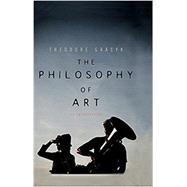
Note: Supplemental materials are not guaranteed with Rental or Used book purchases.
Purchase Benefits
What is included with this book?
| Preface | p. ix |
| Acknowledgments | p. xiii |
| Meaning, Interpretation, and Picturing | p. 1 |
| Visual representations and pictures | p. 2 |
| Theories of picturing | p. 4 |
| Intentions and transparency in pictures and photographs | p. 12 |
| Indiscernible counterparts | p. 14 |
| Fine art | p. 18 |
| Art as Expression | p. 22 |
| Overview of expression theories | p. 22 |
| Tolstoy's account of expressive art | p. 25 |
| Collingwood's account of expressive art | p. 28 |
| The expressive persona | p. 32 |
| Expression as arousal | p. 34 |
| Revising the arousal theory | p. 36 |
| Expression as cognitive recognition | p. 39 |
| Meaning and Creativity | p. 42 |
| Plato on creativity | p. 42 |
| Kant on genius | p. 44 |
| Metaphorical exemplification | p. 47 |
| Hegel and Marx | p. 51 |
| Material bases of creativity | p. 54 |
| Feminism and creativity | p. 57 |
| Fakes, Originals, and Ontology | p. 62 |
| Multiple and singular | p. 62 |
| Abstract objects | p. 64 |
| Problems and implications | p. 66 |
| Fakes and originals | p. 70 |
| Objections and alternatives | p. 75 |
| Authenticity and Cultural Origins | p. 82 |
| Two kinds of contextualism | p. 83 |
| Four kinds of appropriation | p. 87 |
| Moral concerns | p. 90 |
| Culture | p. 93 |
| Cultural authenticity | p. 96 |
| Modernity and authenticity | p. 99 |
| Defining Art | p. 103 |
| Philosophical definition | p. 103 |
| Historical background | p. 105 |
| Functional definitions | p. 107 |
| Institutional definitions | p. 110 |
| Historical definitions | p. 114 |
| The cluster account | p. 117 |
| Aesthetics | p. 123 |
| Aesthetic judgments and properties | p. 123 |
| Supervenience | p. 126 |
| Two complications | p. 128 |
| Aesthetics and nature | p. 129 |
| Formalism and detachment | p. 133 |
| Making special | p. 137 |
| Pleasure and appreciation | p. 139 |
| Beyond the Fine Arts | p. 145 |
| Popular and mass art | p. 146 |
| Standard criticisms of popular art | p. 151 |
| Social consequences of popular culture | p. 155 |
| Gender and race | p. 157 |
| Everyday aesthetics | p. 160 |
| Artistic and Aesthetic Value | p. 165 |
| Three kinds of value | p. 165 |
| The uniqueness thesis | p. 167 |
| Value empiricism | p. 169 |
| Instrumental value | p. 171 |
| An alternative analysis | p. 174 |
| Appreciation | p. 175 |
| Cognitive value | p. 179 |
| Conclusion | p. 135 |
| References | p. 190 |
| Index | p. 200 |
| Table of Contents provided by Ingram. All Rights Reserved. |
The New copy of this book will include any supplemental materials advertised. Please check the title of the book to determine if it should include any access cards, study guides, lab manuals, CDs, etc.
The Used, Rental and eBook copies of this book are not guaranteed to include any supplemental materials. Typically, only the book itself is included. This is true even if the title states it includes any access cards, study guides, lab manuals, CDs, etc.